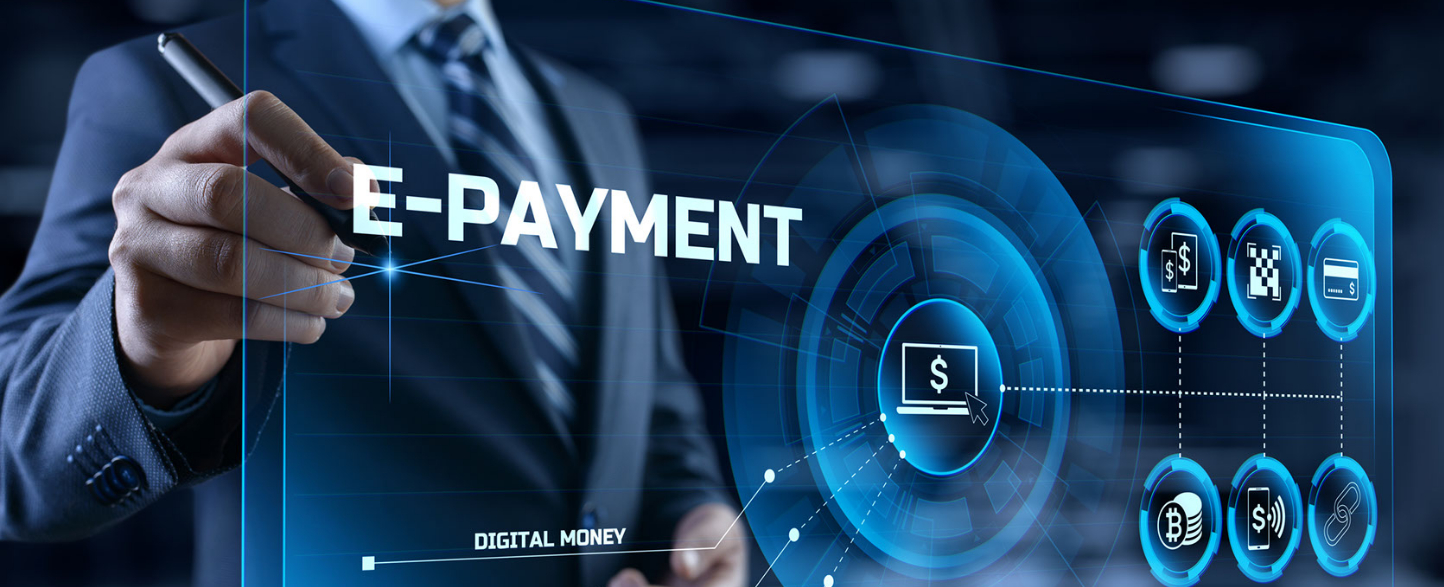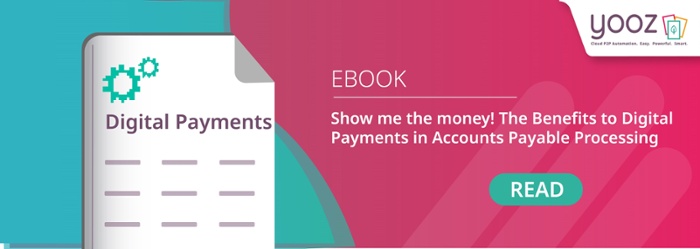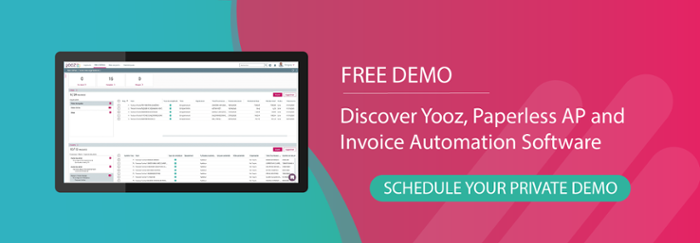The payment process between a merchant and buyer is generally straightforward: there is a transaction and there is an exchange. Generally this refers to some kind of goods and payment, ranging anywhere from a bartering system or cash-based process to physical credit cards and the increasingly common online payment. Each comes with benefits but also risk.
Modern businesses, confronted with a future of expanding cyber threats and attacks, are responding by moving away from dominant manual processes such as paper checks, credit cards, and cash. They are even moving away from electronic bank-to-bank payments (commonly known as ACH), all in an attempt to secure vulnerable data. For these businesses, the future of business to business (B2B) payments is virtual.
Nowhere is this more evident that in the financial department - specifically in the Accounts Payable (AP) process - where organizations are increasingly embracing the use of virtual credit cards to settle invoices with suppliers. These B2B virtual cards offer several tangible advantages over more traditional payments, including enhanced security, savings, and speed. And, when these ePayables are part of intelligent payment automation, they create a truly all-encompassing procure-to-pay process.
Virtual Cards Offer Speed and Security
The idea behind a virtual credit card is as simple as compelling. Instead of using a physical credit card, an organization creates a virtual adaption - the virtual card - where they can create as many 15-digit card numbers as needed as well as define any individual features. No more time-consuming paper processes involving writing, mailing, receiving, and depositing checks. Instead, virtual cards can be quickly generated either through the AP automation platform (if present) or via the website of an issuing bank. It’s an easy and scalable way to deal with growth, even as a small or medium-sized business.
But speed and security aren't found just in the issuing process:
- B2B virtual card numbers can be tied to a specific vendor, project, or order, or assigned to a certain department within the organization. They can be be tied to individual employees who are handling key accounts and need to be agile in dealing with important vendors.
- Virtual cards can be set up for single use or for multiple users or limited to specific suppliers. A fixed expiration date can be used in all cases.
- The AP team or purchasing manager can set the amount for each card to whatever the respective transaction requires.
- As soon as an invoice is approved and payment scheduled, payment can be instantly made. The vendor will be notified that their funds are available, and the AP team will know in real-time when the payment is complete. No more funds in limbo while waiting for the check to be cashed. Instead, working capital is doing exactly that... Working.
- Payment can be automated for trusted and vetted vendors for regular, scheduled delivery.
- Virtual cards enable automated reconciliation, minimizing time and resources spent and doing all the associated tasks by hand.
With all those safeguards built in, virtual cards are a key component of strong internal controls since they will adhere to predetermined rules around an AP approval matrix. The use of B2B virtual cards therefore make it easy to prevent misuse or abuse as well as minimize the risk for errors or fraud.
Virtual Cards Provide Real-Time Payment Information
Tracking is important, both for internal controls and for improving vendor or supplier relations. Using B2B virtual cards does both.
A business can track their spending in detail, going account by account or project by project. Vendors or suppliers, for their part, like the fact that virtual card payments give them better visibility into when they can expect their funds (not to mention they don't have to use manual labor to process anything).
And as stated before, while a traditional check can take up to a month to journey from accounting to the mailroom to the recipient and finally their bank for deposit, B2B virtual cards offer near-instant payment and provide real-time information for both sides.
In short, virtual cards are a win-win solution for both parties of a transaction. They streamline day-to-day operations and help optimize cash management, providing real-time payment and payment information to both sides.
One-Third of All Payments Are Made with B2B Virtual Cards
The combination of convenience, security and savings is yet another reason why a growing number of businesses are getting on board with digital payments as part of their broader goal of digital transformation.
When Yooz polled 1,200 finance leaders for its second State of Automation in Finance report in early 2022, one in five companies said they had already adopted digital payments. Another 62% reported they plan to switch to digital payments in the coming year. Virtual cards are one of many promising new payment methods and still have room to grow. After all, according to the latest Payments Cost Benchmarking Survey by the Association for Financial Professionals (AFP), they currently make up slightly less than one-third of all B2B payments. That number compares with 86% of all B2B payments made by paper checks.
Four Reasons Why B2B Virtual Cards Are a Must
Change marches on, though, and bringing tangible results. When using virtual cards for digital payments, the finance department scores on four fronts:
1. Increasing working capital
When a business has the capability to pay faster, it gives the AP team more time to hang on to larger sums and earn additional returns on its working capital. Better cash management is also beneficial to suppliers who can now track where their payments are and plan accordingly. In addition, virtual cards can add to the business's bottom line by ensuring timely payments (and the potential to benefit from early payment discounts) but also through cash-back rebates offered by many virtual card provides for each payment made (exceptions, such as tax disbursements, apply).
2. Turning a cost center into value driver
Handling checks is pricey and outdated as it’s labor-intensive, time-consuming and prone to mistakes. ePayments such as B2B virtual cards, on the other hand, help turn a traditional back-office cost center into a strategic value driver such as by adding to the business's bottom line by ensuring timely payments (and the potential to benefit from early payment discounts). In addition, virtual credit cards can offer similar benefits as a physical card, such as through cash-back rebates offered by many providers for each payment made (exceptions, such as tax disbursements, apply).
3. Profiting from financial intelligence
Every virtual card transaction becomes part of a detailed digital audit trail from purchase to payment, providing centralized data that allows the organization to build a wealth of real-time information. This information can be used to support strategic decision making, operations, and even for optimizing vendor and supplier relationships. No more searching around for answers regarding invoices; the information is truly there and accessible with just a few keystrokes.
4. Optimizing supplier relationships
Faster payments mean being on time, every time with every invoice. And who doesn’t like to get paid no later than the due date? Prompt payments establish trust and goodwill with your vendors. This is particularly valuable in an economy where costs for all kinds of supplies and services are inching up and delivery dates for key inputs become uncertain across many industries.
Building a business network of reliable suppliers that you can count on is a crucial insurance policy against any external shocks or inflation. Keeping vendors happy with better visibility and prompt payments will make their cash position more predictable and in turn, make your supply chain more resilient.
Purchase-to-Pay Using ePayables
In an ideal scenario, a business will rely on a straight-through automated invoicing process once a purchase order is issued, one with little to no human intervention. Invoice capture, data extraction, General Ledger (GL) coding, and all the review and approval that follows will happen automatically. Once the final step - payments - is also automated, a business can benefit from true end-to-end processing.
FAQs
How does Yooz leverage B2B virtual cards to optimize accounts payable processes?
What are the benefits of using B2B virtual cards for accounts payable, and how does Yooz help organizations maximize these benefits?
How does Yooz ensure the security of B2B virtual card payments and protect against fraud?
Can Yooz's integration with B2B virtual card providers accommodate the specific payment needs and preferences of different organizations?







